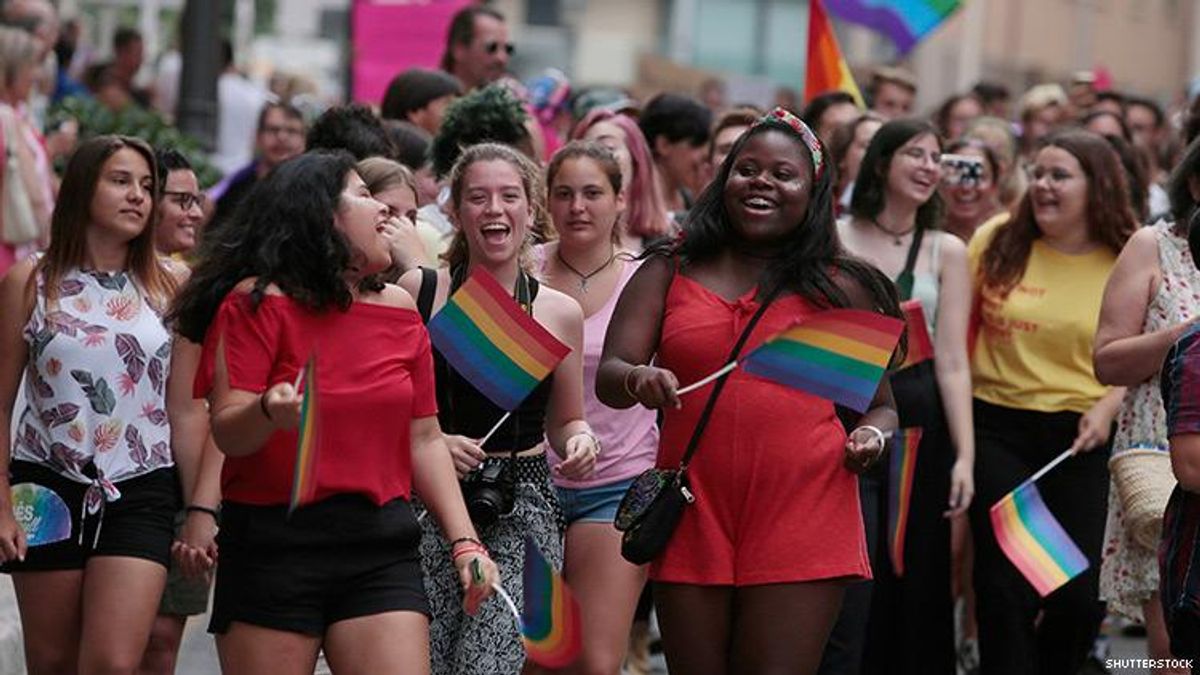News
Queer Youth Rejecting Labels Like 'Gay' and 'Lesbian,' Study Finds

More than 1 in 5 use another term to describe themselves.
October 02 2019 9:50 AM EST
May 31 2023 4:47 PM EST
By continuing to use our site, you agree to our Private Policy and Terms of Use.

More than 1 in 5 use another term to describe themselves.
A large percentage of LGBTQ+ youth identify with a label other than those in the acronym, a new study from The Trevor Project reveals. Those findings could have significant implications for understanding the lives and the needs of queer youth.
Research on sexual orientation has always tended to focus on categorizing people into being homosexual, heterosexual, or bisexual. But as the national youth suicide organization's findings indicate, that doesn't properly represent the full spectrum of identities, particularly given the diversity of younger populations. When given the freedom to employ more expansive terminology for themselves, respondents selected "more than 100 different terms."
That includes more than 1 in 5 youth, described by the study as "LGBTQ" but describing themselves as "something other than gay, lesbian, or bisexual."
Of the 21 percent of youth who described themselves as other, many chose "queer, trisexual, omnisexual, or pansexual." Six percent wrote in their own terms, such as asexual, polysexual, abrosexual, graysexual, androsexual, bicurious, homoflexible, heteroflexible, masexual, omnisexual, sapiosexual, two spirit, and more.
Many respondents differentiated between romantic and sexual attraction, writing "biromantic homosexual" or "asexual panromantic," for example. Others included two or more sexual orientations or relationship types, such as "pansexual and queer" and "pansexual and polyamorous."
The researchers analyzing the data suggest that youth are attempting to use their own terminology to express the complexity of human relationships. Simple labels like "gay" and "straight" don't capture the nuances important to many youth.
The study also reinforced what's long been known: Queer youth are desperately in need of more services and support. The study found that 29 percent of LGBTQ+ youth "seriously considered attempting suicide in the past twelve months," with that number sharply rising for trans and non-binary respondents.
In addition, 71 percent of youth "reported feeling sad or hopeless for at least two weeks in the past year."
Less than half of LGBTQ+ respondents were out to an adult at school, and two in three reported that someone tried to convince them to change their sexual orientation or gender identity at some point. The overwhelming majority -- 93 percent -- said that they shared their sexual orientation with other LGBTQ+ friends, but only six in 10 had told other classmates.
So what are the implications of these findings? One recommendation from the researchers is that youth-facing organizations improve the forms they have clients fill out. Organizations that seek to provide services to young people may not be in a position to understand their needs if their questionnaires don't take the broad spectrum of orientation and relationship labels into account.
There are implications for researchers as well. They may wish to include more label options in their data, which needn't complicate things, the study found. Simply including options like "pansexual" and "queer" allowed researchers to capture 92 percent of respondents, instead of 78 percent using just "gay," "lesbian," and "bisexual."
The Trevor Project, which conducted the study, is already taking inclusive measures across the board, from research to clinical work to training.
RELATED | 5 LGBTQ Organizations to Support on National Coming Out Day